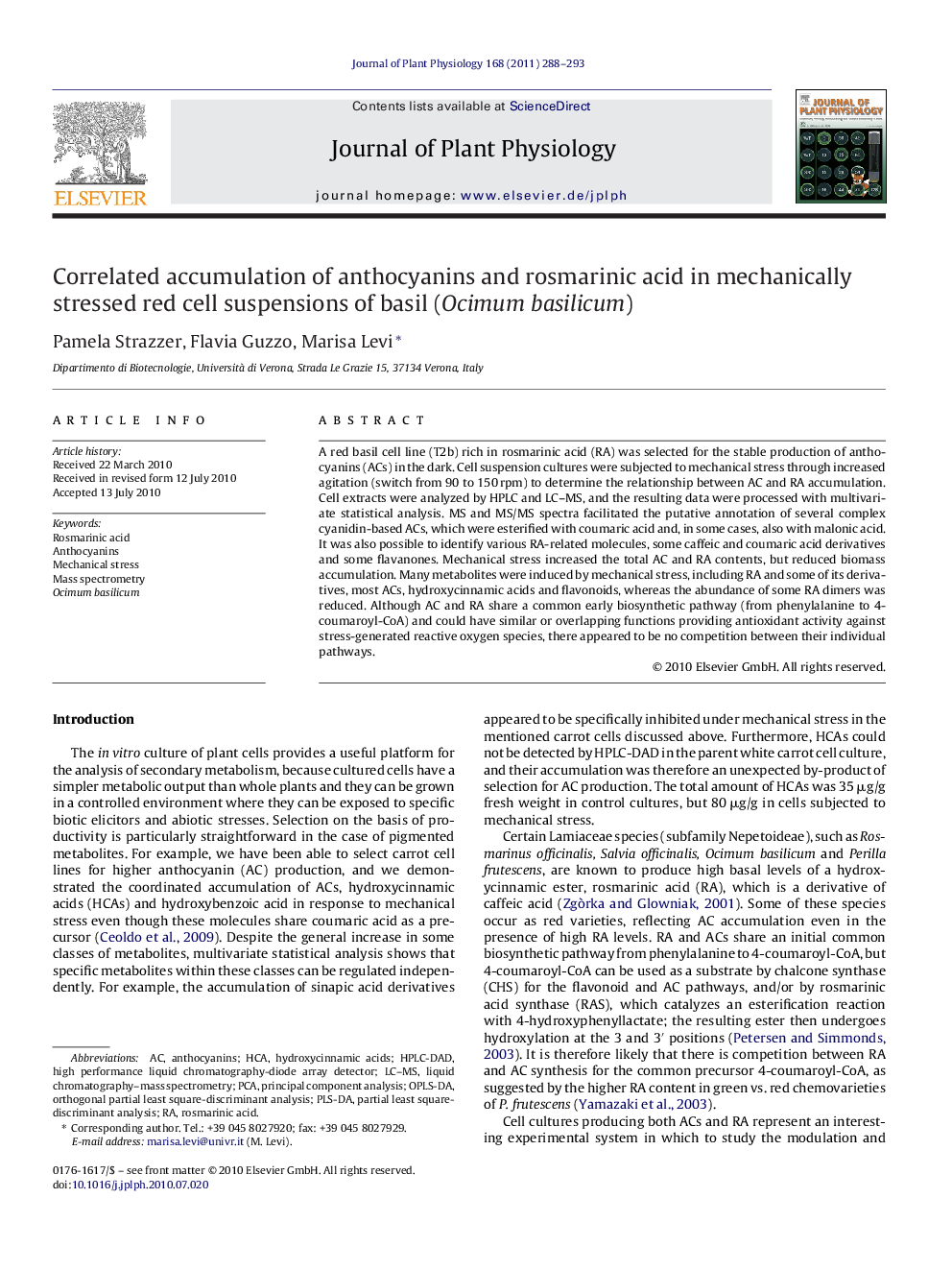| Article ID | Journal | Published Year | Pages | File Type |
|---|---|---|---|---|
| 2056888 | Journal of Plant Physiology | 2011 | 6 Pages |
A red basil cell line (T2b) rich in rosmarinic acid (RA) was selected for the stable production of anthocyanins (ACs) in the dark. Cell suspension cultures were subjected to mechanical stress through increased agitation (switch from 90 to 150 rpm) to determine the relationship between AC and RA accumulation. Cell extracts were analyzed by HPLC and LC–MS, and the resulting data were processed with multivariate statistical analysis. MS and MS/MS spectra facilitated the putative annotation of several complex cyanidin-based ACs, which were esterified with coumaric acid and, in some cases, also with malonic acid. It was also possible to identify various RA-related molecules, some caffeic and coumaric acid derivatives and some flavanones. Mechanical stress increased the total AC and RA contents, but reduced biomass accumulation. Many metabolites were induced by mechanical stress, including RA and some of its derivatives, most ACs, hydroxycinnamic acids and flavonoids, whereas the abundance of some RA dimers was reduced. Although AC and RA share a common early biosynthetic pathway (from phenylalanine to 4-coumaroyl-CoA) and could have similar or overlapping functions providing antioxidant activity against stress-generated reactive oxygen species, there appeared to be no competition between their individual pathways.
